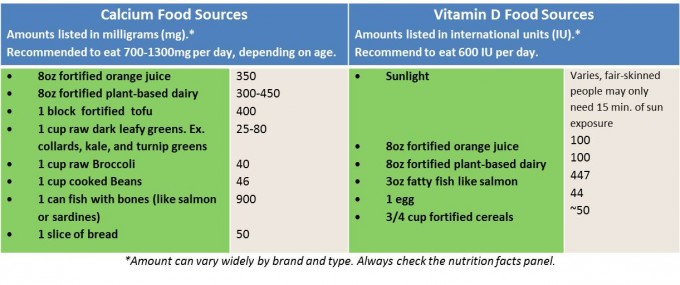Milk Myths
Emily Finnan is a Registered Dietitian in the Clinical Nutrition department at Franciscan Hospital for Children. If you have nutrition-related questions, please email us at info@fhfc.org or call 617-254-3800 x1350.

Milk is a healthy, popular beverage. It’s a great source of calcium and vitamin D, which are essential for bone health. Did you know that kids ages 1 to 5 years old get almost 20% of their daily calories from milk1?
There are also several popular “milk myths” about this drink. Let’s investigate some of these myths, and get to the bottom of them to better understand health and nutrition!
Milk is what kids need to grow. They can never have too much!
While milk has many great benefits, it also has calories. Liquid calories can be troublesome, as drinks generally don’t “fill-up” children. This can lead to a child eating and drinking too many calories. Once children are 2 years old it’s recommend switching from whole milk to low-fat milk and avoiding flavored versions (like chocolate milk) to help reduce calories.
Young children who drink excess milk may also be at risk for iron deficiency anemia or low iron in the blood. This because:
1. Milk is naturally low in iron. Drinking too much milk can lead to eating less of other foods that are higher in iron like meats, beans, and dark green veggies.
2. The calcium and casein (a protein) in milk can limit the absorption of iron in other foods eaten with milk.
3. In infants, regular cow’s milk can also lead to blood loss, and therefore iron loss, in the gastrointestinal (GI) tract. This is one reason why infants should not drink cow’s milk until they are 12 months old. (In infant formula the cow’s milk is modified so it is safe for infants.)
Bottom Line: There is a limit on milk intake. The American Academy of Pediatrics recommends from age 1 to 8 years old kids should drink 2 cups (16 ounces) of milk a day. From age 8 to 18 years old it’s recommended to drink 3 cups of milk per day2.
Plant-based milks are much healthier than regular cow’s milk.
Soy, almond, hemp, rice, coconut, cashew, and more – it seems every day the grocery store shelf has new, alternative plant-based milk. Plant-based milks don’t necessarily stack up against cow’s milk. There are some nutrition pros and cons to this alternative milk.
Pros: Plant-based milks are often lower in saturated fat and higher in poly and mono un-saturated fat; which are better for heart health. They can also be lower in calories and a great alternative for those with a milk allergy, lactose intolerance, or vegan diet.
Cons: Plant-based milks typically are lower in protein, calcium, and vitamin D (though the latter two are often added in). Additionally, many contain added sugar – especially flavored versions.
Bottom line: Check out the nutrition facts panel to see if your child is getting similar amounts of the important nutrients that are found in cow’s milk. One serving (1 cup) of low-fat cow’s milk has 90 calories, 13 grams of sugar (naturally occurring), 8 grams of protein, 30% daily value (300 mg) of calcium, and 120 IU of vitamin D. Other tips are to avoid flavored versions, choose un-sweetened if possible, and opt for soy milk if protein intake is a concern.
Kids should eat as unprocessed as possible, including raw milk.
Some people claim that raw, unpasteurized milk is safe, more nutritious, and provides other health benefits. This is not true. Pasteurization involves heating milk very quickly to a very high temperature in order to kill potential bacteria and preserve the nutritional value. Indeed, some vitamin concentrations may be slightly lowered during pasteurization, but this still outweighs the risks associated with drinking raw milk. Raw milk does not have any additional health benefits that can’t be found in pasteurized milk.
Raw milk can, and does, cause illnesses and hospitalizations every year. 979 illnesses from 2007 to 2012 were reported from raw milk3. Young children are especially at risk as their immune systems are still maturing so they are less able to fight the bacteria. Even small and local farms’ raw milk can still be contaminated. It is not worth the risk.
Bottom line: ALWAYS select pasteurized milk and milk products for your child. In Massachusetts, it is the law that all of the milk you find in a grocery store is pasteurized.
Lactose intolerance means swearing off dairy for the rest of a child’s life.
Lactose intolerance occurs when a person’s body has lower amounts, or is lacking lactase. Lactase is an enzyme that breaks down the lactose (a sugar) naturally found in all animal milk. In certain ethnic groups, such as Hispanic, African-American, and Asian, up to 20% of children show signs of intolerance by age 54.
If your child is diagnosed with lactose intolerance it can still be possible to enjoy some dairy products. How much lactose a person can tolerate varies widely from person to person. Some people find lower lactose cheeses like cream cheese, cottage cheese, ricotta cheese, or aged chesses such as Swiss, cheddar, and parmesan do not bother them. Still, others find that they must avoid all sources of lactose including food made with milk, butter, cream, and whey as well as all dairy products.
As milk is a large source of calcium and vitamin D, it is important to ensure that your child eats or drinks other sources (see below). Some people still enjoy dairy by taking lactase pills with dairy food, or drink a lactose-free version of cow’s milk.

Bottom line: Your child may be able to incorporate some dairy in his or her diet. Even if no dairy foods are eaten calcium and vitamin D can be obtained from other dietary sources or supplements. An over-the-counter supplement of 500 mg calcium and 600 IU vitamin D is generally appropriate. Consult your pediatrician before starting a new supplement.
There are many myths associated with milk and other foods common in children’s diets. If you have questions or concerns, please reach out to your child’s pediatrician or consult a dietitian for more information.
View All Blog Stories